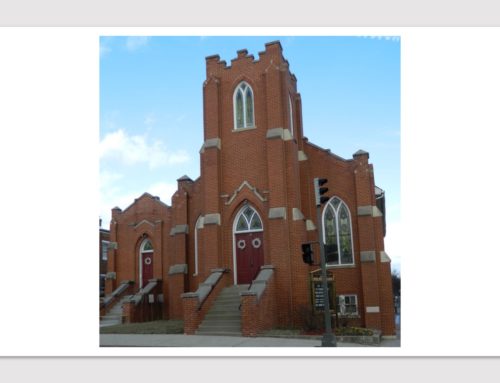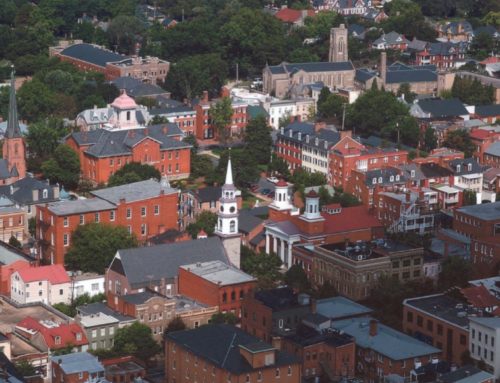Excerpt from the Frederick News-Post:
A controversial proposal to remove a bust of Roger Brooke Taney from outside Frederick City Hall remains one vote away from a final decision.
The city Historic Preservation Commission will on Oct. 13 issue a final verdict. The commission will decide if the Taney bust, an accompanying plaque and a bust of Gov. Thomas Johnson can be removed from City Hall property.
That decision will be the end to more than a year of public hearings and debate, including national media coverage, of efforts to remove the Taney tribute.
The city Historic Preservation Commission on Thursday started the process for the two-part vote. Members voted 6-1 to designate the busts and plaque as contributing resources to the Frederick Town Historic District.
The second vote, on the removal itself, will take place at the commission’s next meeting on Oct. 13, as required by the city’s historic preservation guidelines. Had the commission voted to designate the busts a noncontributing resource, members could have voted on the removal the same night.
Taney is best known for writing the opinion in the Dred Scott v. Sanford decision while the fifth chief justice of the United States. The 1857 decision said African-Americans could not sue in federal court because they were not entitled to the same rights as American citizens.
But it was not Dred Scott, but rather the context in which the Taney bust was erected in 1931 in front of the then-Frederick County Courthouse, that commission members highlighted on Thursday.
“Whether you like what Taney said or not, whether you care about the first governor or not. … They were designed to be here,” said commission member Stephen Parnes.
Commissioner Carrie Albee agreed that there was no question for her as to the significance of the busts as contributing resources.
Racial segregation through state and local Jim Crow laws still prevailed in Southern states at that time, noted commission member Michael Simons.
Commission member Dan Lawton pointed to the pedestals and brick pavers cementing the busts into the ground as further evidence of the deliberate intention to make the bust a permanent property.
With a contributing designation, the commission can still approve removal of the busts and plaque from City Hall, providing that the streetscape and surrounding historic properties will not be hurt, according to city preservation guidelines.
The vote Thursday came after impassioned testimony from roughly a dozen local residents and preservation advocates. The majority of those who spoke advocated against removing the Taney bust, framing the issue as preserving history and a teaching moment.
“The history of white supremacy is real, not something that’s new … or something that should be hidden or whitewashed,” said Darlene Lacet, identifying herself as an African-American city resident. “We can hide it, we can make it more comfortable for people to come into City Hall, but that does not lead to discussion.”
“Removing these statues does not redress those wrongs,” agreed Peggy DuFour. “It kind of just makes things worse.”
If approved for removal, both busts and the plaque may be put on display in Mount Olivet Cemetery, according to Nikki Bamonti, the mayor’s executive assistant. Bamonti on Thursday said the cemetery made having the two busts and plaque together a condition of its tentative agreement.
Johnson, the first governor of Maryland, owned slaves, as noted during the series of public hearings about the Taney bust last year.
The resolution of support adopted by the aldermen last fall, based on the proposal introduced by Alderwoman Donna Kuzemchak, targeted only the Taney bust.



